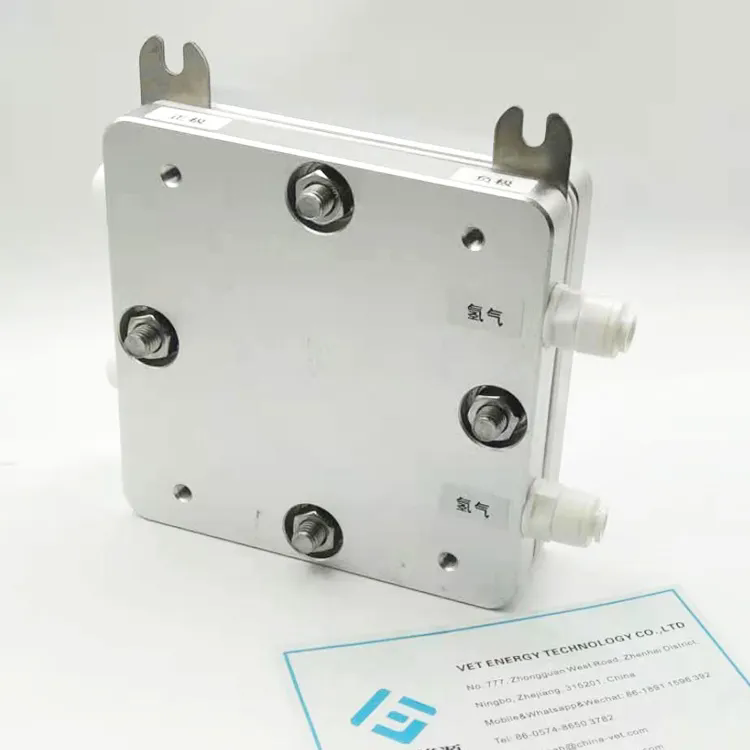The Benefits of Long-Lasting PEM Electrolyzers
2024-08-09
In the quest for cleaner energy sources and more sustainable industrial practices, hydrogen has emerged as a key player. Central to hydrogen production are PEM (Proton Exchange Membrane) electrolyzers, which are devices that use electrolysis to split water into hydrogen and oxygen. Among the many types of electrolyzers, long-lasting PEM electrolyzers stand out due to their efficiency and durability. This blog explores the numerous benefits of long-lasting PEM electrolyzers and their role in advancing clean energy technology.
What Are PEM Electrolyzers?
PEM electrolyzers are a type of electrochemical cell used to produce hydrogen from water. They work by applying an electric current to water, which causes it to split into hydrogen and oxygen gases. The "proton exchange membrane" is a key component that facilitates the movement of protons from the anode to the cathode, ensuring the efficient production of hydrogen.
Benefits of Long-Lasting PEM Electrolyzers
1. Increased Operational Efficiency
- Consistent Performance: Long-lasting PEM electrolyzers are designed to maintain high efficiency over extended periods. This ensures that the electrolyzers continue to produce hydrogen at optimal rates, supporting stable and reliable hydrogen supply.
- Enhanced Energy Utilization: By operating efficiently over their lifespan, these electrolyzers maximize energy use, reducing waste and improving overall system performance.
2. Reduced Operating Costs
- Lower Maintenance Needs: The durability of long-lasting PEM electrolyzers means they require less frequent maintenance and fewer replacements. This results in lower operational costs and reduces downtime associated with repairs or system overhauls.
- Cost-Effective Hydrogen Production: With fewer replacements and maintenance requirements, the cost per kilogram of hydrogen produced decreases, making the process more economically viable.
3. Extended Lifespan
- Durable Components: Long-lasting PEM electrolyzers are built with high-quality materials and advanced technologies that enhance their durability. This extended lifespan reduces the need for frequent replacements and contributes to lower lifecycle costs.
- Reliability: The longer operational life of these electrolyzers means they provide a reliable source of hydrogen, crucial for applications such as fuel cells, industrial processes, and energy storage.
4. Environmental Impact
- Reduced Waste: By extending the lifespan of PEM electrolyzers, we decrease the frequency of manufacturing and disposing of these devices. This reduces waste and minimizes the environmental impact associated with the production and disposal of electrolyzer components.
- Lower Carbon Footprint: The efficient operation of long-lasting PEM electrolyzers results in lower greenhouse gas emissions compared to traditional hydrogen production methods. This aligns with the goal of reducing the overall carbon footprint of hydrogen production.
5. High-Quality Hydrogen Production
- Purity and Efficiency: PEM electrolyzers are known for producing high-purity hydrogen. The long-lasting versions maintain this quality over time, ensuring that the hydrogen produced is suitable for use in fuel cells and other sensitive applications.
- Consistency: Consistent production of high-quality hydrogen helps ensure that fuel cells and other systems dependent on hydrogen operate effectively and efficiently.
6. Flexibility and Scalability
- Adaptability: Long-lasting PEM electrolyzers are versatile and can be integrated into various hydrogen production systems, including those powered by renewable energy sources like wind and solar.
- Scalable Solutions: The ability to scale up or down according to demand makes these electrolyzers suitable for a wide range of applications, from small-scale hydrogen production to large industrial setups.
7. Support for Renewable Energy Integration
- Grid Balancing: PEM electrolyzers can quickly adjust to changes in power input, making them well-suited for integration with intermittent renewable energy sources. This flexibility helps balance the grid and ensures a stable hydrogen supply.
- Energy Storage: Hydrogen produced by PEM electrolyzers can be stored and used as an energy carrier, providing a means to store excess renewable energy for later use.
Applications of Long-Lasting PEM Electrolyzers
1. Hydrogen Fuel Cells
- Transportation: Long-lasting PEM electrolyzers provide a reliable source of hydrogen for fuel cell vehicles, contributing to the development of clean transportation solutions.
- Stationary Power: They also supply hydrogen for stationary fuel cells, which can provide backup power or support grid stability.
2. Industrial Processes
- Feedstock: Hydrogen is used as a feedstock in various industrial processes, such as ammonia production and petroleum refining. Long-lasting PEM electrolyzers ensure a steady supply of high-quality hydrogen for these applications.
3. Renewable Energy Storage
- Energy Storage Systems: Hydrogen produced by PEM electrolyzers can be used in energy storage systems, helping to store excess energy from renewable sources and release it when needed.
4. Emerging Technologies
- Research and Development: Long-lasting PEM electrolyzers support the development of new technologies and applications, such as advanced fuel cells and hydrogen-based energy systems.
Conclusion
Long-lasting PEM electrolyzers offer numerous benefits that contribute to a more sustainable and efficient hydrogen production process. Their extended operational lifespan, reduced maintenance needs, and high efficiency make them a valuable component in the clean energy transition. By supporting the production of high-quality hydrogen, these electrolyzers play a crucial role in advancing renewable energy integration, reducing environmental impact, and promoting economic viability.
As the world continues to focus on sustainable energy solutions, long-lasting PEM electrolyzers will be at the forefront of driving innovation and supporting the global shift towards cleaner, more efficient energy systems. Embracing this technology is not only a step towards reducing our carbon footprint but also a commitment to building a more sustainable future.



